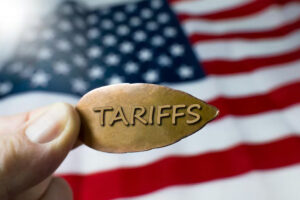
How to Maximize Credit Card Rewards: Turn Every Purchase into Profits
Smart Strategies to Earn More Cash Back, Miles, and Points with Everyday Spending
In today’s fast-paced world, credit cards offer more than just convenience—they’re powerful tools to earn valuable rewards on everyday purchases. Whether you’re buying groceries, booking flights, or paying monthly bills, the right credit card can transform your expenses into a steady stream of cashback, travel points, or perks like hotel stays and airline upgrades. But earning rewards isn’t just about using a credit card—it’s about using it smartly.
Maximizing credit card rewards requires a blend of strategy and discipline. From choosing cards with category bonuses to taking advantage of welcome offers and referral bonuses, there are countless ways to enhance your return. For example, some cards offer up to 5% cashback on rotating categories like gas, groceries, or dining, while travel cards may provide double or triple points on flights and hotel stays.
It’s also about timing and consistency. Using your card for recurring bills, automating payments to avoid interest, and pairing the right card with the right expense can significantly amplify your earnings. But perhaps most importantly, managing rewards cards responsibly—by avoiding interest charges and fees—ensures your rewards aren’t offset by debt.
If used strategically, credit cards can become a tool for financial gain instead of a liability. This guide walks you through how to unlock their full potential, without falling into common traps. Whether you’re a beginner or a seasoned cardholder, there’s always more you can do to turn spending into saving.

Unlock the Hidden Value in Your Wallet
Discover the Financial Benefits of Smart Credit Card Reward Strategies
Bonus Categories Can Multiply Your Earnings
Many credit cards offer elevated reward rates on specific spending categories such as dining, travel, or groceries. Rotating category cards, like the Chase Freedom Flex, can offer up to 5% cashback on select categories each quarter. Maximizing these bonuses requires planning your spending around them or timing big purchases accordingly. Keep a list of your cards’ bonus structures to ensure you’re using the most rewarding card for each expense. Don’t miss out on valuable returns simply by using the wrong card at the wrong time.
Welcome Bonuses Are Free Money—If You Qualify
Most rewards credit cards offer generous welcome bonuses if you meet a spending threshold within the first few months. For instance, a card might offer 60,000 points (worth $600 or more in travel) if you spend $4,000 in the first 3 months. If you already have a large purchase planned (like a new laptop or appliance), aligning it with a new card’s intro offer can make that expense significantly more valuable. Just ensure you don’t overspend just to chase the bonus.
Points Aren’t Always Equal—Redemption Value Matters
Cashback may be simple, but points and miles often have higher redemption values, especially for travel. Transferring your points to airline or hotel partners can double or triple their worth compared to using them for statement credit. For example, 50,000 Chase Ultimate Rewards points might get you $500 in cashback—but could be worth $750 or more when used through travel portals or partners. Learn how your rewards system works to extract maximum value.
Paying Bills with Your Card Can Add Up
Recurring bills like streaming services, utilities, or insurance premiums can be charged to your credit card. While it may not seem like much, these consistent payments help build your reward balance over time—especially when using cards that offer points on recurring services. Just be sure your service provider doesn’t charge a fee for credit payments. Automate the payments to ensure you never miss one and enjoy steady, passive reward accumulation.
The Flip Side of Rewards: What to Watch Out For
Understand the Minor Pitfalls So You Can Maximize Benefits with Confidence
Overspending to Earn Rewards Can Backfire
The thrill of earning rewards can sometimes tempt cardholders to spend beyond their means just to reach a bonus or take advantage of a high-reward category. This often leads to carrying a balance, which accrues interest and quickly wipes out any rewards earned. The key is to only use rewards cards for purchases you would make anyway. Strategic spending is smart—unnecessary spending is not. Stay disciplined, and your rewards will always work for you, not against you.
Complex Reward Structures Can Be Confusing
Many high-earning credit cards come with complicated reward structures, including rotating categories, redemption limits, or transfer partners. Without understanding how your card works, it’s easy to miss opportunities or even let points expire. Take time to review your card’s fine print and track your rewards activity regularly. There are even apps that help simplify this process. A little effort can go a long way in ensuring your rewards strategy stays efficient and rewarding.
Credit cards have evolved far beyond simple payment tools—they’re now robust financial instruments offering an array of rewards and perks. When used properly, they can be leveraged to earn cash back, travel discounts, or even luxury experiences without spending more than you already do. But getting the most from credit card rewards takes more than just swiping and hoping for the best. It’s about strategy, timing, and understanding how each card fits into your overall financial picture.
Whether you’re looking to travel more affordably, earn cash back on groceries, or just get more value from your daily purchases, there’s a rewards card tailored for your goals. This article will guide you through the essential tips, tricks, and potential pitfalls of maximizing your credit card rewards. From welcome bonuses to optimal redemption strategies, you’ll learn how to make every dollar you spend work harder for you—without falling into common traps that could cost you.
Our Post


Beyond Budgeting: Master Your Money with the Power of Conscious Spending

